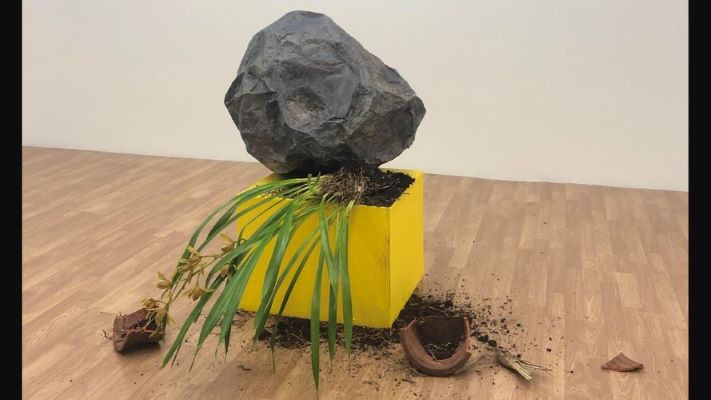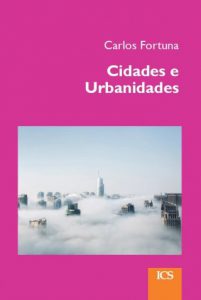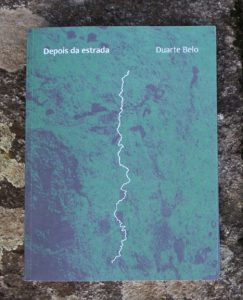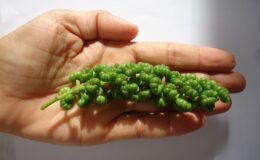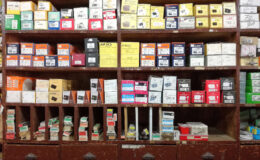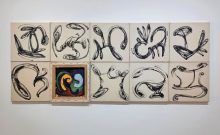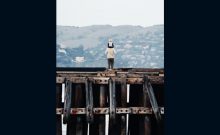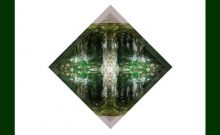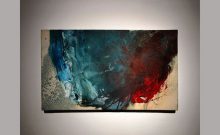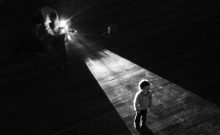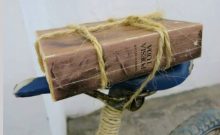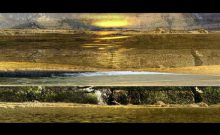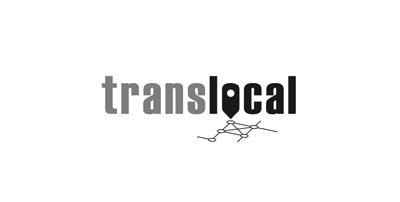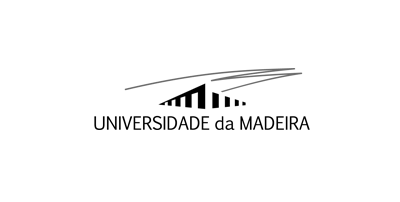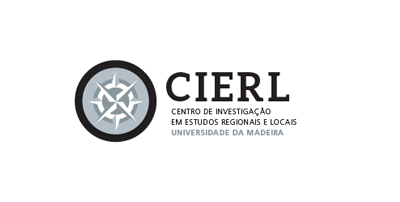| Imagem de capa © Martinho Mendes | |
| “Uma pedra derruba a orquídea-da-festa (Cymbidium Tracyanum)” – 2018 [papel pintado, vimes, arame, planta natural, vaso de cerâmica madeirense e terra vegetal. Dimensões variáveis – instalação integrada na exposição Geografia do Risco, Sismógrafo, Porto] | |
| Coordenação | Ana Salgueiro (UMa-CIERL) & Nuno Marques (Umeå University) | |
| Convite à publicação em Português aqui [normas de edição] data limite: 2020.11.30 | |
| Call for publication in English here [authors guidelines] deadline: 2020.11.30 | |
| ouverture _ pre.lú.di.o | Ana Salgueiro & Nuno Marques | |
| ENSAIOS VISUAIS | VISUAL ESSAYS | |
| casas da fazenda do porto santo | José Campinho [23.06.2020 – 20.11.2020] | |
| As casas da fazenda da Ilha do Porto Santo ilustram bem a relação de complementaridade entre a ação do Homem e o respeito pelo meio natural. São construções precárias de apoio à atividade agrícola tradicional, erguidas com materiais reaproveitados. Representam com simplicidade e engenho criativo os valores defendidos pelo Programa MaB – O Homem e a Biosfera da UNESCO. Este ensaio visual procura chamar a atenção para estas construções precárias e os valores locais que promovem esta forma de habitação do espaço insular, sinalizando também a integração, em 2020, do Porto Santo na rede mundial de Reservas da Biosfera da UNESCO. | |
| Cinco assoalhadas ou cinco depoimentos sobre cinco pinturas | Filipa Venâncio [30.11.2020 – 28.12.2020] |
|
| Este ensaio visual propõe fazer coabitar cinco pinturas provenientes de cinco exposições individuais desenvolvidas entre 2007 e 2018. Não foram pensadas para serem apresentadas juntas, mas assumem possibilidades de vizinhança que as podem fazer conviver assim, lado a lado. Encaixam-se naquele que é o meu território de investigação na pintura: uma certa compulsão por casas, por projetos que problematizam uma certa ideia de espaço e de lugar, interior ou exterior, existente ou já demolido; o apelo por volumetrias arquitetónicas, simultaneamente desniveladas, complexas, labirínticas, impossíveis de habitar e de descrever e/ou construções simples, sofisticadas, com anexos, recantos, passagens, alpendres e sacadas; vazias, recheadas, despojadas ou repletas de objetos e detalhes insignificantes ou valiosos e o puro exercício da pintura, a atração cada vez maior pela cor do cimento e a inapelável necessidade de perseguir e apropriar a pele das paredes, camada sobre camada, tela sobre tela, em narrativas enviesadas ou não; um interesse em explorar a multiplicidade de um assunto até à exaustão, através de processos de criação que envolvem a narratividade, a revisitação, a apropriação, a descontextualização e a desconstrução, aliadas à ironia e ao humor. | |
| Habitar a céu aberto: vestígios de um país | João Gomes de Abreu, Margarida Carvalho e Museu da Paisagem [30.11.2020 – 12.02.2021] | |
| O ensaio visual Habitar a céu aberto: vestígios de um país, de João Gomes de Abreu, nasce da viagem que o autor realizou durante vinte dias, no verão de 2019, durante a qual, em ritmo intenso, sempre com pernoitas no carro ou em tenda, percorreu um itinerário ao longo do território português com a extensão de seis mil quilómetros, que corresponde à distância entre os extremos ocidental e oriental do continente europeu, do Cabo da Roca aos Montes Urais, na Rússia. O desenho desta linha sobre o território português foi realizado pelo fotógrafo Duarte Belo, pelo que a viagem de João Gomes de Abreu é traçada a partir de um diálogo e de uma colaboração criativa entre os dois autores, dando igualmente origem ao livro conjunto Viagem Maior, publicado pela editora Museu da Paisagem, em dezembro de 2020. “Habitar a céu aberto: vestígios de um país”, através da fotografia de João Gomes de Abreu e do texto de Margarida Carvalho, conduz-nos até essa(s) viagem(s) e até esses vestígios de um país (des)habitado. |
|
| ENSAIOS | ESSAYS |
|
| O poder do teatro enquanto espaço de materialidade | Daniel Gamito-Marques (Centro Interuniversitário de História das Ciências e da Tecnologia, Universidade NOVA de Lisboa) [31.12.2020 – 06.06.2021] | |
| Resumo: Com este ensaio, pretendo reflectir sobre o lugar do teatro numa era pós-COVID-19, reafirmando-o enquanto forma artística intrinsecamente ligada à reunião de um conjunto de pessoas no mesmo espaço físico. Antes mesmo dos confinamentos decretados, era possível detectar sinais de uma passagem crescente da vida humana para o espaço desmaterializado do digital, atingindo áreas como o trabalho, o lazer, a comunicação interpessoal, e até a procura de parceiro. A necessidade de evitar a proximidade física a outras pessoas para impedir a transmissão do vírus, medida relevante que teve resultados práticos, não fez mais do que acelerar esta tendência. Confrontados com o encerramento forçado de teatros, os criadores da área também se viraram para o espaço digital à procura de alternativas. Contudo, o digital apresenta limitações que colidem com características centrais do nosso conceito de teatro. O teatro pode ainda ser entendido como uma forma de resistência à digitalização da vida humana, enquanto continuar a ser “manifestação física de alguma coisa que acontece à frente de um público de indivíduos de carne e osso” (CARNEVALI 2020), e num espaço físico concreto. | |
| Palavras-Chave: digital; artes performativas; teoria dos afectos; empatia; COVID-19 | |
| Abstract: The purpose of this essay is to discuss the place of theater in a post-COVID-19 era by reinforcing the indelible link of this artistic form to the assembly of people in the same physical space. Even before the establishment of containment measures, it was possible to detect the increasing migration of human life to the de-territorialized space of the digital, in what concerns work, leisure, interpersonal communication, and even the search for a romantic/sexual partner. The necessity of limiting physical proximity to other people in order to slow viral transmission, a both relevant and useful measure, has certainly increased the above mentioned tendency. Confronted with closed working spaces, authors of the performing arts have searched for alternatives in the digital space. However, this territory has limitations that collide with central characteristics of our concept of theater. Theater can still be understood as a form of resistance against the digitalization of human life, insofar as it continues to be “the physical manifestation of something that happens in front of an audience of flesh and bone individuals” (CARNEVALI 2020), and in a concrete physical space. | |
| Keywords: digital; performing arts; affect theory; empathy; COVID-19. | |
| Seduction, Promises and the Disneyfication of Barbuda post Irma | Sophia Perdikaris (University of Nebraska-Lincoln), Rebecca Boger (City University of New York), Emira Ibrahimpasic (University of Nebraska-Lincoln) [09.11.2020 – 03.01.2021] | |
| Abstract: Under the guise of post-hurricane development, the national government of Antigua and Barbuda exploited the disasterscape of post Hurricane Irma Barbuda to usher in a new wave of economic development that has left Barbudans separated from their unique culture and identity. In this article we explore what are inhabited vs. uninhabited spaces, the effects of Colonial Christian ideas on cultivated vs. uncultivated lands and the effects of capitalist seduction to traditional landscapes and seascapes. We argue that this neocolonial approach to traditional lifeways increases vulnerability of both people and environment. By wiping out diversity and culture in order to replace it with acultural, Disneyfied landscapes serving outside interests and furthering the divide between rich and poor through the singular economy of tourism, it pushes local people into a new slavery through dependence and servitude. | |
| Keywords: Barbuda, Disaster Capitalism, Disneyfication, Cultural Heritage, Uninhabited Spaces | |
| The Procession of the Sealed Doors: the collective as a liminal space | Rita Barreira (Instituto de História da Arte – NOVA FCSH) [30.11.2020 – 06.07.2022] |
|
| Abstract:This essay discusses the collective as a liminal space in the urban performance The Procession of the Sealed Doors of French artist Lise Bardou, which occurred in Lisbon on February 12th 2020. A group of culture workers, where I was included, were invited to walk through a detour of construction barriers, urban renovations and abandoned buildings in Lisbon that, in turn, were activated with art installations and the praising of Janus, the roman god for trespassing doors and unseen worlds. Lise Bardou calls the collective to trespass and face the neo-liberal landscape of Lisbon. I go through collectivization as the dynamic infra-structure of this performance, unfolding several directions from its liminal space (the collective walk). In the first section (.map), I introduce the details, modes and materials of the Procession and address space as practice, inscribing the collective making with the city critique, the public space, and situationist strategies. In the second section (.procession), I dive into the materials and modes in use for this collective walk, problematizing its urban possibilities, the diy aesthetics, and ritual and movement as a set for the production of meaning. In the third section (.sudarium), I focus on one of the performance installations to think trespassing and squatting as liminal spaces and their action in empty buildings, squares or enclaves of the city. I use an interdisciplinary methodology to write this paper based on my direct participation in the performance, in interviews with Lise Bardou, as well as a theoretical corpus of philosophy, urban and culture studies. | |
| Keywords: Lise Bardou; Public Art; Spatial Practices; Urban Politics; Lisbon | |
ARTIGOS | ARTICLES |
|
| The Atopic Arctic in Lost Worlds Novels | Maria Lindgren Leavenworth (Umea University) [30.11.2020 – 16.01.2021] | |
| Abstract: The article examines two Lost World novels that depict the discovery of a civilization beneath the North Pole: William R. Bradshaw’s The Goddess of Atvatabar (1892), and Mary E. Bradley Lane’s Mizora: A Prophecy (1889). While previous criticism has focused on he imagined lands and the contrasts it provides with which to criticize or negotiate structures in the real world, this article addresses the brief sections in each novel that describe the travelers’ journeys through the Arctic. Siobhan Carroll’s definition of atopic spaces in An Empire of Air and Water (2015) is a point of departure for examining the function of the arctic landscape. “Atopias,” she writes, are “‘real’ natural regions falling within the scope of contemporary human mobility, which, because of their intangibility, inhospitality, or inaccessibility, cannot be converted into the locations of affective habitation known as ‘place’” (6). In contrast to the nowhere of the utopia, atopias are reachable but situated in both literal and figurative peripheries, and they are commonly only visited temporarily. The atopic Arctic resists visitors’ attempts to control, structure and colonize, disorients both the visitor and the outsider’s perceptions and functions in both novels as a space of transition between real and imagined. | |
| Keywords: The Goddess of Atvatabar, Mizora: A Prophecy, Arctic, atopia, lost worlds | |
| José Agostinho Baptista, le sentiment de soi | Paulo Figueira (Centro de Literaturas e Culturas Lusófonas e Europeias da Universidade de Lisboa e do Centro de Estudos Comparatistas) [30.11.2020 – 07.02.2021] | |
| Resumo: A poesia de José Agostinho Baptista, nas últimas décadas do século XX e na primeira do século XXI, proporciona ao leitor a descoberta de uma nova casa, formada, sobretudo, por imagens de um exílio que procura ser habitado pela memória da casa original. Dentro de um tempo pós-modernista, com traços fortes do individualismo intrínseco à geografia do exílio, o sujeito poético vive na reimaginação da ilha original, em pleno exílio. Numa poética com fortes laivos autobiográficos, o Eu exibe um conjunto de marcas narrativas que apresentam um antigo lugar sob a máscara de uma nova terra, constantemente habitada e desabitada pelo sujeito da enunciação. O espaço da memória como habitação, além de reforçar a pessoalidade no discurso do sujeito poético, apresenta ao leitor uma espécie de paz com o próprio ser. | |
| Palavras-Chave: Narratividade; Exílio; Madeira; México; Memória. | |
| Abstract: José Agostinho Baptista’s poetry, in the last decades of the 20th century and the first decade of the 21st century, provides the reader with the discovery of a new place, formed mainly by images of an exile that seeks to be inhabited by the memory of the original space. Within a postmodernist time, with strong traits of individualism intrinsic to the geography of exile, the subject lives in the reimagination of the original island, in full exile. In a poetics with strong autobiographical features, the subject shows a set of narrative traits that present an old place under the mask of a new land, constantly inhabited and uninhabited by the subject of the enunciation. The space of memory as housing, in addition to reinforcing the personality in the speech of the poetic subject, gives the reader with a kind of peace with his own being. | |
| Keywords: Narrativity; Exile; Madeira; Mexico; Memory. | |
| (Un)inhabiting Svalbard: Stories of makings from a transient place in the High Arctic | Jundan Jasmine Zhang, Zdenka Sokolickova, Alexandra Meyer, Cecilie Vindal Ødegaard, Laura Ferguson, Lisbeth Ivers [09.11.2020 – 26.09.2021] | |
| Abstract: The Svalbard archipelago, as well as the Arctic in general, have long been portrayed as pristine nature, harsh and hostile environment, an uninhabitable space for human beings. In reality the Arctic is home to four million people whose everyday lives have been fast-changing and have been impacted by not only the physical changes of environmental instabilities, but also other broader discourses such as geopolitics, scientific research and sustainability, not to mention other global crisis such as the Covid-19 pandemic. All these myths, representations, and entangled histories and realities lead to the following questions: How have some places, not others, come to be inhabited? What makes a place inhabitable, and for whom? Who has the right to define that? And how do we view different approaches of inhabiting on different scales? Drawing on both conceptual and empirical materials, this article is a joint effort of us as a group of social scientists who are conducting or have conducted research on Svalbard (svalbardsocialscience.com/). By telling stories from our respective experiences and backgrounds, we wish to illustrate a more nuanced picture of how economic, geopolitical, scientific, sociocultural, and environmental concerns are always interconnected, and more importantly, how different forms of (in)voluntary inhabiting and uninhabiting in Svalbard, in particular in Longyearbyen and Svea, can possibly lead to or have led to various makings and becomings. |
|
| Keywords: Svalbard, inhabitability, uninhabiting, social science, storytelling. | |
| . | |
| Errâncias para (Des)Habitar a Arte, a Estética e a Cidade | Sabrina Fernandes Melo (Universidade Federal de Paraíba) e Glória Alejandra Guarnizo Luna (Universidade Federal de Santa Catarina) [31.10.2020 – 16.06.2021] | |
| Resumo: A experiência artística pode ser percebida como um deslocamento do sujeito e quando relacionada ao nomadismo, às errâncias, às derivas, transforma-se na capacidade de capturar momentos, de expandir potências. A arte e suas possíveis relações com a estética articulam-se no tempo presente como local de produção e de (re)existência ao totalizante, ao impositivo. Pensando na potência do flanar, do deslocamento, da deriva, foi criado, em 2019, o curso de extensão Arte, Estética e Cidade, realizado na disciplina de Tópicos em Estética do Curso de graduação em Artes Visuais da Universidade Federal da Paraíba (Brasil). O objetivo foi proporcionar a conjunção entre Arte, Estética e Cidade enquanto espaços possíveis para a produção de novos modos de ver, sentir, experienciar e atuar na cidade. O artigo discute interações possíveis entre corpo, espaço e cidade, partindo da noção de habitar enquanto denominador comum para o desenvolvimento conceitual destas categorias. Para tanto, são discutidos autores que tratam das relações entre corpo, cidade, memória e percepções a partir de perspectivas que buscam ultrapassar a conceituação do espaço construído enquanto racional, formal e geométrico ao explorar suas potencialidades artísticas e criativas a partir das experiências e imagens produzidas durante o curso e seus momentos de errância. | |
| Palavras-Chave: Arte, estética, cidade, errâncias | |
| Abstract: The artistic experience can be perceived as a displacement of the subject and when related to nomadism, wandering, drifting, it becomes the ability to capture moments, to expand powers. Art and its possible relations with aesthetics are articulated in the present time as a place of production and of (re) existence to the totalizing, to the imposing. Thinking about the power of wander, displacement, drift, in 2019, the Art, Aesthetics and City extension course was created in the Aesthetic Topics course of the Visual Arts undergraduate program at the Federal University of Paraíba. The objective was to provide the conjunction between Art, Aesthetics and the City as possible spaces for the production of new ways of seeing, feeling, experiencing and acting in the city. The article discusses possible interactions between body, space and city based on the notion of living as a common denominator for the conceptual development of these categories. To this end, authors are discussed who deal with the relationships between body, city, memory and perceptions from perspectives that seek to overcome the concept of the constructed space as rational, formal and geometric by exploring the artistic and creative potentialities from the experiences and images produced during the course and its moments of wandering | |
| Keywords: Art, aesthetics, city, wanderings. | |
| Troubling Visits and Uncanny Encounters – Indigenous Concepts of Other than Humans and Their Homes | Stephan Dudeck, Zsófia Schön, Christian Vagt, Agrafena Pesikova, Yosif Kechimov, Vasilii Usanov, Yuri Vella |
|
| Abstract: The idea for this article grew out of the joint attempt of a linguistic, an anthropologist, a filmmaker, and Indigenous storytellers to find ways to make Indigenous stories of deserted places and seemingly uninhabited places understandable. We present here stories in different languages, namely Surgut Khanty and English, as told by Khanty and Forest Nenets semi-nomadic reindeer herders, hunters, and fishermen, all inhabitants of the Western Siberian Forest. Together, we decided on a collaborative and multidisciplinary methodology in order to find polyphonic and multilayered ways of presentation, translation, and interpretation of the Khanty and Nenets stories. The result is a form of presentation that might simultaneously serve diverse audiences: the ones that might read the text of a Khanty story in the written standard of Surgut Khanty. We have recorded Khanty stories in Russian language and present them in a short film for the Russian-speaking Khanty, and especially the Khanty youth, part of whom have lost their ancestral language, as well as other non-indigenous inhabitants of Russia. We provide the English translations of the Khanty and Nenets stories with an ethnographic commentary for a global audience interested in the content and context of these stories and the messages the Khanty wish to deliver. In the first part we recount several Khanty stories, a story told by a Forest Nenets living in the Khanty community and a lecture by a Khanty scholar. In the second, we provide metadata, ethnographic commentaries, and explanations in order to stress the significance of the stories presented. |
|
| Keywords: Indigenous storytelling; Khanty; Forest Nenets; Home | |
| DIÁLOGOS | DIALOGUES | |
| qualquer coisa de intermédio | Catarina Botelho [30.11.2020 – 27.12.2020] | |
| Resumo: “qualquer coisa de intermédio” apresenta um ensaio fotográfico realizado nos baldios limítrofes de Barcelona durante o ano de 2019. O baldio é um espaço sem regras ou vigilância, onde existências invisibilizadas, que não encontram lugar na cidade construida, criam mundos próprios. No Manifesto da Terceira Paisagem, Gilles Clement define estes sítios, como lugares em transição, entre duas ordens, uma que já terminou e outra que há-de vir, espaços que não são a luz nem a sombra, que não são o poder nem a submissão ao poder. Nas fotografias deste ensaio encontramos os indícios daquilo que aí ocorre. Vemos os rastos das actividades não mercantilizáveis, ou que são consideradas ilícitas e/ou ilegais: zonas de convívio a céu aberto, onde se bebe em grupo, hortas, trabalho sexual, casas improvisadas, campos de jogos precários, espaços de encontro sexual ou lugares de uso recreativo ou outro de drogas. Presenças que se materializam em vestígios, ocupações ou construções. Algumas com funções práticas reconhecíveis, outras, enigmáticos jogos de materiais dispostos no espaço. Gestos de apropriação, de criação, de organização de mundo, que habitam os baldios. | |
| Abstract: “qualquer coisa de intermédio”/”something in between” includes a photo essay carried out in the wastelands of Barcelona during 2019. The wasteland is a space without rules or surveillance, where existences made invisible, that do not find a place in the city, create worlds of their own. In the manifesto of the third landscape Gilles Clement defines these spaces as places in transition, between two orders, one that has already ended and the other that will come, spaces that are neither light nor shadow, that are neither power nor submission to power. In the photographs of this essay we find the indications of the activities that take place there, because due to their own characteristics are not profitable/merchantable, or are considered illicit and/or illegal: open-air social areas, places where groups of people drink, vegetable gardens, sex work, makeshift houses, precarious playgrounds, spaces for sexual encounter or places for recreational or other kind of drug use. Presences that materialize in remains, occupations or constructions. Some with recognizable practical functions, others, enigmatic games of materials. Gestures of appropriation, of creation, of world organization that inhabit the wastelands. |
|
| . | |
| Written with lightning: filming Barbuda before de storm | Russell Leigh Sharman (University of Arkansas; Fauetteville Film Fest) [09.11.2020 – 02.01.2021] | |
| Abstract: In June of 2014, I travelled to the island of Barbuda with Cheryl Harris Sharman to document and film the traditional foodways of the people of the island. We gathered more than 25 hours of footage from farmers, ranchers, hunters, fishermen, shop keepers and educators. The narrative that formed throughout those hours of interviews was one of deep conviction over the traditional subsistence autonomy of the island and the growing threat to sustainability from over-development and state intervention. And that was before the hurricane in 2017 that decimated the island and drove every last inhabitant from its shores. Now, as residents attempt to return and rebuild, those corporate and government forces are an even greater threat to their tradition of sustainable practices. This chapter places that new reality in the context of life before the storm, in the words of the farmers, fishermen and shop keepers themselves. | |
| Uma paisagem íntima, (des)habitável: algumas notas sobre As Casas dos Outros | José Duarte e Rita Onofre [09.11.2020 – 30.01.2021] | |
| As Casas dos Outros é composto por diferentes espaços. Primeiro, espaço-livro e, depois, espaço-filme. Do espaço-livro, habitado pelas palavras de Maria Esmeralda Mendes, pintora e escritora prolífica algures esquecida, e publicado em 1988 pela lendária editora &etc de Vítor Silva Tavares, pode dizer-se que ecoam duas vozes: a voz da escritora e a voz da narradora. Do espaço-filme, num gesto semelhante, as palavras habitam a casa pela voz da realizadora Rita Onofre que lê parte de As Casas dos Outros, mas também por via das imagens. Foi por acaso que o livro de Maria Esmeralda Mendes lhe veio parar às mãos, numa visita à “Ler Devagar”, livraria e espaço de leitura e convívio em Alcântara (Lisboa). Desse encontro resulta um filme com o mesmo nome, baseado num excerto do livro. | |
| Uma Ideia pronta para Ocupar : Documentário e ocupações no Porto em 2011-2012. Entrevista com o coletivo Viva Filmes | Igor Dimitri (Faculdade de Ciências Sociais e Humanas da Universidade Nova de Lisboa) e Rita Barreira (Instituto de História da Arte, Universidade Nova de Lisboa e Plataforma Doutoral no Instituto de História da Arte) [30.11.20 – 22.09.2021] | |
| “A entrevista que se segue com o coletivo Viva Filmes surge a partir dos documentários Es.CoL.A da Fontinha (Viva Filmes: 2012) e Recycled Madonna (Viva Filmes: 2012) que focam respetivamente a ocupação Espaço Colectivo Autogestionado do Alto da Fontinha (Es.Col.A) em 2011-12, bem como o movimento específico de ocupações e luta política no Porto durante esse ano. Acompanham a produção social e o curso interno da ocupação Es.CoL.A que, por sua vez, resultou num centro social para a população do Alto da Fontinha. A auto-gestão do espaço abandonado resultou numa cantina popular, num centro de apoio escolar, ginásio, numa sala de computadores, biblioteca, e ciclo-oficina. Passou a contar com uma programação cultural versátil, assente em atividades como oficinas de pintura, concertos de música, clubes de xadrez, um coro, teatro, etc. Estas valências e atividades foram projetadas e implementadas numa lógica livre do lucro, produzindo um espaço com um sistema social próprio, e naturalmente com uma ambição de alteridade à hegemonização neo-liberal, pela qual os espaços se regulam como bens e ativos de mercado. Deste modo, os documentários seguiram a luta e resistência da Es.Col.A em permanecer na Fontinha, assinalando as ações e manifestações populares, bem como os conflitos dos despejos.” | |
| . | |
| 0LHARES CRUZADOS | CROSSED VIEWS __ ESPAÇO 116 [FUNCHAL] |
|
| Espaço 116 : uma breve história do projecto | Fátima Spínola, Jose Zyberchema, Jorge Ribeiro de Castro e Xavier Miguel (Artistas e Gestores do Espaço 116 ) [30.11.2020 – 28.02.2021] |
|
| O Espaço 116 é um espaço onde o risco é permitido em nome da inovação, um laboratório artístico de desenvolvimento de ideias e competências. Tem como propósito principal utilizar as estruturas físicas e o potencial poético de uma casa velha e/ ou degradada e dinamizá-la com arte e cultura, através da maior diversidade possível de manifestações de expressão artística, cultural e intelectual. Nasceu no Funchal, no seio da própria cidade: a zona histórica de St. Maria. Tem o seu início em Abril de 2012, no nº 116 da rua de St. Maria. A partir de Fevereiro de 2013 o projecto teve continuidade no nº 28 da rua dos Barreiros, passando em Outubro de 2016 para um novo espaço na rua Latino Coelho. É sede e casa do colectivo Mad Space Invaders, da Associação Teatro Bolo do Caco, do Photobook Club Madeira e dos projectos Bem a Poesia… e Cine 116. | |
| Entrevista a Mickaella Dantas conduzida por Fátima Spínola [30.11.2020 – 28.02.2021] | |
| Entrevista a Alexandr Semenov sobre o Espaço 116 conduzida por Jorge Ribeiro de Castro [30.11.2020 – 28.02.2021] | |
| SUGESTÕES DE LEITURA | BOOK REVIEWS | |
|
|
Translocal
Culturas contemporâneas locais e urbanas
